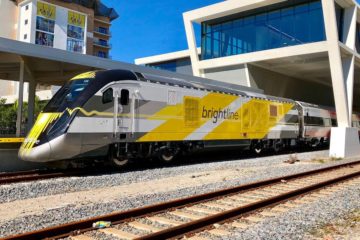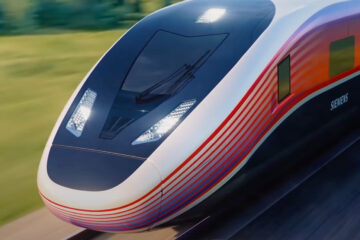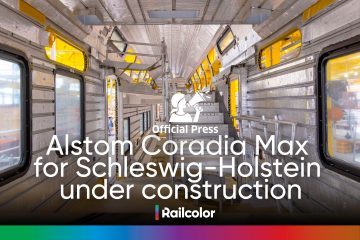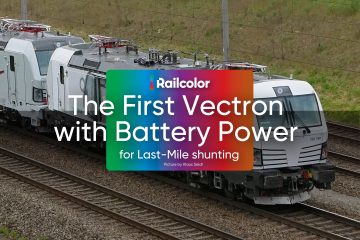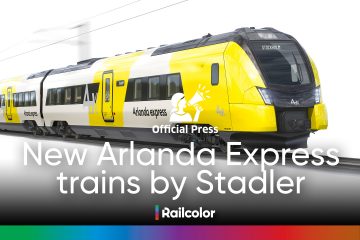The number of passengers travelling over long distances has been climbing for years, and operators of high-speed trains face tight competition with airlines and new providers of long-distance, road-based services. Future-proof trains with reduced lifecycle costs and enhanced travel comfort are therefore more important than ever for securing and increasing high-speed rail transport.
Demands fulfilled: a competitive advantage
Siemens has meticulously developed the new Velaro Novo to meet today’s demands – from its sophisticated concept to its innovative technologies. The vehicle concept sets new standards when it comes to economic efficiency and sustainability: Operators profit from lower maintenance costs reduced energy consumption and maximized availability.
The design of the Velaro Novo, tailored to meet the needs of operators, provides additional capacity without compromising passenger experience. The new vehicle platform is also highly flexible, offering scalable trainset configurations that satisfy customer wishes and changing requirements. The Velaro Novo naturally meets all current requirements and standards, in particular, the Technical Specification for Interoperability (TSI).

Innovative train concept
The new high-speed train from Siemens draws on the extensive experience gained from three generations of Velaros operating since the Velaro E (AVE S103) was delivered to Spain in 2005. Since then, more than 1,000 Velaro trains operating worldwide have covered over two billion kilometres at speeds up to 380 km/h and are adding one million kilometres to this total every single day.
The new Velaro Novo trainset is based on the proven distributed traction system used since the ICE 3, can be delivered as a single- or dual-system train (15 kv/25 kV), and has a scalable traction system for top speeds of 250 km/h to 360 km/h. The corresponding power outputs range from 4,700 to 8,000 kW. In a seven-car configuration, the Velaro Novo is 202 meters long and can be operated with either single or dual systems. A 404-meter long 14-car version is also available.
Outstanding energy efficiency
With the Velaro Novo, Siemens is writing a new chapter in its Velaro success story – one marked by innovations in energy efficiency. Running at 300 km/h, for example, the new high-speed train uses 30 percent less energy than previous Velaro models, which translates to savings of 1,375 tons of CO2 emissions a year.
Rigorously improved aerodynamics are essential for achieving higher energy efficiency and thus substantially reduced lifecycle costs. The completely covered and streamlined bogies cut energy consumption by roughly 15 percent and lower
noise emissions. The aerodynamics of the end cars, further improved with a more streamlined front surface, and gangway connections that are flush with the train’s body shell substantially reduce aerodynamic drag and cut energy consumption by around ten percent. In addition, the high-voltage equipment on the car roof is also completely covered, further improving the aerodynamics.

Furthermore, the Velaro Novo is around 15 percent lighter than the previous Velaro generations. New profile and welding technologies for the body shells, massoptimized inbound bogies, new on-board converters and the use of innovative
materials and construction solutions are just a few examples of the advances that have reduced the train’s weight by over 70 tons. The design of the inbound bogies, proven in the Desiro City trainsets operating in the United Kingdom, was combined with experience gained with Velaro bogies and further refined for the Velaro Novo.
The inbound bearings substantially lighten the running and traction bogies and, as a result of the lower unsprung mass, ensure smoother operation and reduced wear.
Low-wear, cost-efficient operation
Maintenance costs for the new train will also be substantially reduced. Continuously collected status data from the train can be analyzed and provide precise instructions for predictive, condition-oriented maintenance work. The electrical high-performance brakes with brake resistors enable braking largely without wear and tear, considerably reducing maintenance costs for the pneumatic braking system.
Flexible interior concept
The Velaro Novo’s lightweight body shell is based on the empty tube concept, meaning that there are no permanent installations inside the car and the interior can be furnished according to customer wishes and altered whenever requirements change. The cars have no underseat containers or electrical cabinets in their interior. Technical installations are reduced to a minimum and are functionally organized to optimize cable routes and weight savings. As a result of this design, the maximum possible capacity is available for passengers.
Despite the car length of 28.75 meters – a length that requires a somewhat narrower body shell to meet structure gauge requirements – the new cars have an aisle width of 535 mm, 11 mm wider than the previous Velaro while offering the same seating comfort. For operations on rail routes with larger structure gauges, a variant is available with a wider body shell, making possible a 2+3 seating configuration.
Internet service, passenger information systems, on-board entertainment and CCTV security surveillance systems can be integrated to meet customer needs.
Stringent testing
Siemens has been rigorously testing the innovations used in its new high-speed train since April 2018. A test car, integrated into the ICE S operated by DB Systemtechnik, is currently undergoing test runs throughout Germany. The tests are being conducted under various operating conditions to monitor and analyze the performance of the car body and bogies, among other things. This data serves the project-independent testing and securing of the key vehicle features.
Future-proof and sustainable
The Velaro Novo from Siemens is a systematic further development of three Velaro generations. Numerous innovations in details have made the new high-speed train a unique, highly efficient concept that consumes up to 30 percent less energy and clearly reduces investment and maintenance costs. At the same time, developers managed to increase the train’s available space by ten percent. With its empty tube concept and numerous configuration possibilities, the Velaro Novo is future-proof and can be flexibly adjusted to meet new design concepts and customer needs even after years in operation. With its new key technical data, the Velaro Novo sets a new standard for high-speed rail transport.
Technical data
Velaro Novo 280 km/h
- Traction power 4,700 kW
- Traction startup force 230 kN
- Brake power 5,600 kW rheostatic
- Trainset length 202 m
- Mass 412 t
- Maximum speed 280 km/h
Velaro Novo 360 km/h
- Traction power 8,000 kW
- Traction startup force 275 kN
- Brake power 8,400 kW rheostatic
- Trainset length 202 m
- Mass 420 t
- Maximum speed 360 km/h
Velaro AC single system
- Traction power 8,000 kW
- Traction startup force 300 kN
- Trainset length 201 m
- Mass 485 t
- Maximum speed 320 km/h




